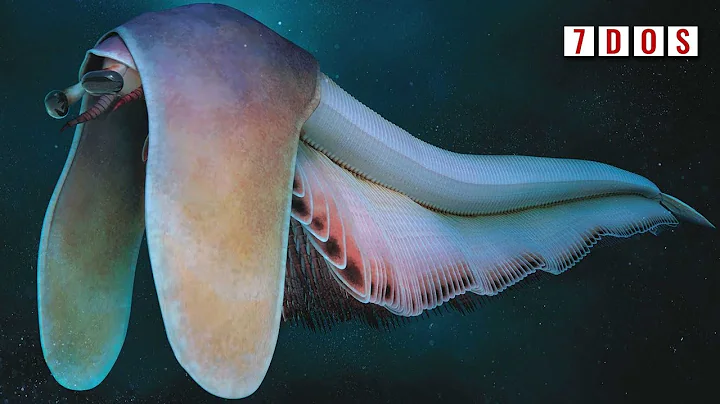
Intersection News Life on earth has evolved over hundreds of millions of years, and there are too many mysteries waiting to be explored. People are always curious, where do we come from? Who are the ancestors? "Yunnanensis can be said to be the ancestor of human beings."Researcher Zhu Maoyan of the Nanjing Institute of Geology and Paleontology, Chinese Academy of Sciences (hereinafter referred to as "Nangu Institute") said, "It is the most primitive group of vertebrates."
Recently, my country Scientists have discovered that the pharyngeal arches of Yunnanensis produced by the Chengjiang fauna of the Cambrian period 518 million years ago have a unique cellular cartilage structure of vertebrates, confirming that Yunnanensis is the most primitive group of vertebrates. This research was completed by the "Early Evolution of Earth-Life System" research team led by researcher Zhu Maoyan and the research group of Professor Jiang Baoyu from the School of Earth Science and Engineering of Nanjing University. It was published in the American "Science" on July 8, 2022. Science) journal.
Is there any doubt about the classification position of Yunnan Insect? A big discussion has started in the academic world
In the evolution of life, the evolution of vertebrates, the genealogy to which humans belong, is one of the most magnificent chapters, and the most fascinating one has always been the question about the origin of vertebrates.
Amphioxus is a delicious aquatic product, and it is also the transitional type from invertebrates to vertebrates - it has not yet formed bony skeletons to support movement with notochords running throughout the body. "We can understand notochord as a tissue similar to 'tendons.'" Zhao Fangchen, a researcher at the Nangu Institute of Ancient Sciences, said that evolutionary biologists usually speculate based on the characteristics of amphioxus that the ancestors of vertebrates were a type of animal with notochords and dorsal nerves. Tubes and gill slits of deuterostomes . However, this hypothetical vertebrate ancestor has never been supported by fossil evidence.
Previously, scientists discovered a variety of chordates such as basal vertebrates Kunming fish and Yunnan worm in the fauna of Chengjiang, Yunnan, China, which dates back 518 million years. They are by far the oldest chordates in the world. Unlike Kunming fish, which has typical vertebrate characteristics, Yunnan worm's morphology is closer to the cephalochordate amphioxus, and its taxonomic position has been controversial.
In 1995, Chen Junyuan, a researcher at the Nangu Institute of Ancient China, and others published Yunnanensis as the earliest chordate in the journal Nature. Later, they discovered a large number of new specimens of Yunnanensis in Haikou, Kunming. Through more detailed anatomy, the researchers classified Yunnanworm as a primitive cephalopod, and believed that its evolutionary position was between the cephalochordate amphioxus and the vertebrate lamprey. This result was published in Nature magazine in 1999, sparking a great discussion in the academic community about the taxonomic position of Yunnanensis.
Because different scholars have their own opinions on the details of the different soft body tissues preserved by Yunnanensis, Yunnanensis has been classified into vertebrates, cephalochordates, hemichordates, deuterostomes and even primitive groups since it was first reported in 1991. The classification position of bilaterian animals has not been determined.
Experimental techniques and algorithms confirm the classification of Yunnanensis
Regarding the mystery of the classification position of Yunnanensis, conventional morphological research cannot reach a consensus. "We have used a variety of modern experimental techniques such as three-dimensional X-ray tomography microscopy, scanning electron microscopy and transmission electron microscopy, hoping to solve this mystery from the perspective of micro-anatomical structure." Zhao Fangchen said that previous studies have proposed Yunnanensis worm The branchial arches may have cellular cartilage, and the team found stacked disc-like cell structures and protein microfibril structures on the pharyngeal arches of Yunnanensis. "These two characteristics are only found in vertebrate cartilage cells. Yunnanworm has a pharyngeal arch made of cellular cartilage unique to vertebrates, which shows that Yunnanworm belongs to primitive vertebrates."
In addition to experimental technical means, research The team also integrated the latest biological trait matrix and used Bayesian algorithm for reconstruction calculation. The analysis confirmed that Yunnanensis is at the very base of the vertebrate lineage. It is the most primitive vertebrate, between urochordates and other vertebrates.
There are seven pairs of pharyngeal arches in Yunnanworm."We found the same stacked disc-shaped cell structure, gill filaments, protein microfibrils and other structures as other branchial arches in the rear at the position equivalent to the first pair of pharyngeal arches in the new specimen," Zhao Fangchen said, indicating that Yunnan The worm has 7 pairs of pharyngeal arches that are similar to each other from front to back and have cellular cartilage. Another Cambrian basal vertebrate, Metaspriggis, also has pharyngeal arches that are similar to each other, which confirms the hypothesis of homology of vertebrate pharyngeal arches proposed by anatomy experts in the 19th century—that is, It is said that with evolution, pharyngeal arches in different positions of vertebrates will develop into bones with different shapes, but in the early stages of evolution, pharyngeal arches in different positions are similar to each other.
Ancient "close relatives" reveal the origin and evolution of vertebrates
The pharyngeal skull is a group of bones surrounding the digestive tract of the vertebrate head that plays a supporting and protective role. The pharyngeal skull of living vertebrates is composed of pharyngeal arch bones. "Our research has found that the seven pairs of pharyngeal arches of Yunnanworm form a basket-shaped pharyngeal skull." Zhao Fangchen said that living jawless vertebrates and fossil jawless fishes have a basket-shaped pharyngeal skull. The pharyngeal skull of jawed vertebrates, like the post-Cambrian sprigfish, is composed of a series of separate cartilaginous rods. This pharyngeal skull feature has previously caused controversy about the pharyngeal skull shape of the ancestors of vertebrates. "But now it is confirmed that Yunnanensis appeared earlier and was located at the most basic position of vertebrates, which also shows that the basket-shaped pharyngeal skull is an older ancestral feature." Zhao Fangchen added.
As the oldest "close relative" of living vertebrates, Yunnanensis provides key evidence for revealing the origin and early evolution of vertebrates. It will have a profound impact on the exploration of the evolution of jaws and other key features of vertebrates. From another perspective, this study once again demonstrates the potential of Chengjiang fauna fossils to preserve fine biological structures at the micro- and nanoscale.
The reviewers of the Science journal article commented: "This is a major contribution to science and will become a key paper in vertebrate paleontology, presenting the long-awaited and most credible fossil evidence of anatomy. "The information they present is a milestone that will be difficult to surpass even with higher-resolution studies for many years to come," the reviewers also affirmed. The resolution has reached the limit of the most advanced technology, which is a landmark work.”
Xinhua Daily·Junction Point reporter Zhang Xuan and intern Sun Guangzhe
.




















